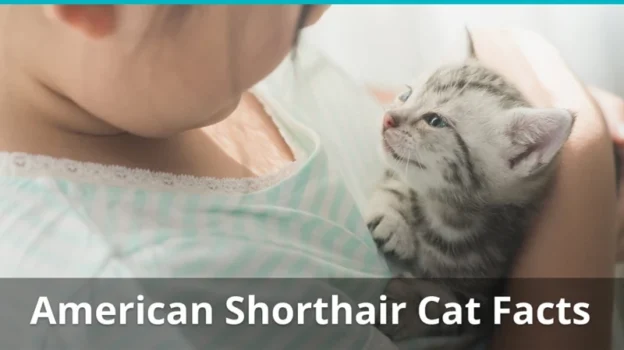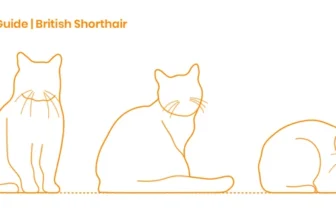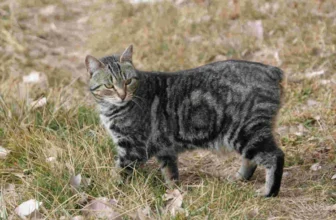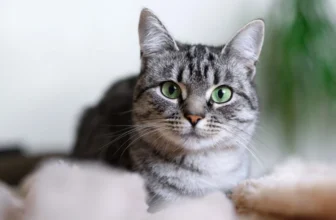As cat owners, we do everything in our power to ensure our feline friends are as happy and healthy as possible. However, despite our efforts, our American Shorthair cats can still develop common health issues that require attention. From dental problems to heart issues and obesity, there are a variety of ailments that can affect our furry companions. In this article, we’ll explore the most common health issues that American Shorthair cats may face, as well as offer tips on how to prevent and manage them effectively. So, let’s dive in and learn how to keep our beloved pets healthy and thriving!
Dental Issues
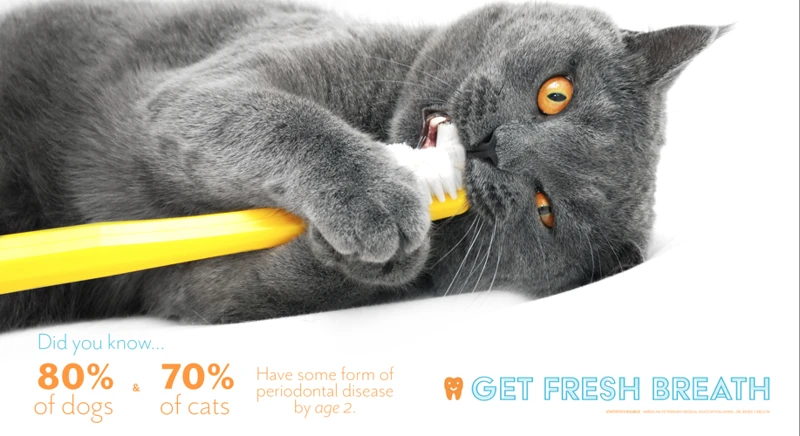
Maintaining good dental hygiene is crucial for the overall health and well-being of your American Shorthair cat. Like humans, cats can also suffer from dental issues that, if left untreated, can cause more serious health problems. Some common dental issues that American Shorthair cats experience include gingivitis, periodontitis, and stomatitis. However, there are preventive measures you can take to keep your cat’s teeth healthy and strong. To learn more about how to prevent dental issues in your furry friend, check out our article on preventive measures.
Gingivitis
Gingivitis is a common dental issue that affects American Shorthair cats. This condition occurs when the gums become inflamed and swollen due to the accumulation of plaque and tartar on the teeth. If left untreated, gingivitis can progress to periodontitis, which is a more advanced form of gum disease. Signs of gingivitis include red, swollen, and bleeding gums, bad breath, and reluctance to eat.
Preventing gingivitis involves regular at-home dental care, including brushing your cat’s teeth with a toothbrush and toothpaste specially designed for felines. Providing your cat with appropriate chew toys, bones, and dental treats can help remove plaque and tartar from their teeth. Probiotics and water additives can also be helpful in preventing the development of gingivitis and other dental issues.
If you suspect your American Shorthair may have gingivitis, it is important to schedule a vet visit as soon as possible. Treatment may involve a professional dental cleaning, along with antibiotics or other medications to address the underlying cause of the issue and reduce inflammation. You can learn more about the preventive measures and necessary vet checkups for your American Shorthair cat’s dental health in our article on keeping a healthy American Shorthair cat.
Periodontitis
Periodontitis is a very common health concern in American Shorthair cats, as well as in other cat breeds. This dental issue is much more severe and advanced than simply dealing with gingivitis. Periodontitis can lead to excessive inflammation of the gums, tooth loss, and even severe damage to internal organs.
The Symptoms
Periodontitis symptoms are similar to gingivitis but more severe. You may notice the following signs if your cat exhibits Periodontitis:
- Bad breath
- Red, swollen, or bleeding gums
- Visible tartar
- Loose or missing teeth
- Persistent drooling
If you notice any of these symptoms, it’s best to schedule a vet appointment to get a proper diagnosis and treatment plan.
The Causes
Periodontitis can be caused by a variety of factors such as:
- Poor oral hygiene
- Bacterial infections
- Plaque buildup
- Tartar buildup
Cats with certain health conditions like diabetes or immunodeficiency disorders may also be at higher risk of developing Periodontitis.
The Treatment
Treatment for Periodontitis usually involves a professional dental cleaning performed under general anesthesia. During the cleaning, the vet will remove the plaque and tartar buildup above and below the gum line, performing tooth extractions if necessary. Dental X-rays are also performed to assess the extent of the damage to the gums and underlying bone. Your vet may prescribe antibiotics and pain management medication as well.
Prevention
The best way to prevent Periodontitis in your American Shorthair cat is by keeping up with a regular dental routine that includes brushing your cat’s teeth daily and scheduling regular vet checkups, at least once every six months. Additionally, feeding your cat a balanced diet that meets their specific nutritional needs, and offering toys that encourage chewing can help reduce the risk of developing gum disease.
Periodontitis can be a serious health concern for your American Shorthair cat, but it’s completely preventable. Maintaining a good dental hygiene routine, keeping up with regular vet visits, and providing your cat with a balanced diet and plenty of opportunities to chew can all help prevent Periodontitis from occurring.
If you are interested in learning more about preventing health issues for American Shorthair cats, you can check out our article on regular vet visits or special dietary needs for American Shorthair cats.
Stomatitis
Stomatitis is a common health issue in American Shorthair cats that is characterized by inflammation of the mouth. This condition can be very painful for your cat and may cause difficulty in eating and grooming. While the exact cause of Stomatitis is yet to be determined, it has been associated with various factors such as viral infections, autoimmune disorders, and dental diseases.
Symptoms of Stomatitis
The symptoms of Stomatitis can vary from one cat to another, but they often include bad breath, drooling, difficulty in eating or chewing, and sensitivity around the mouth area. In severe cases, your cat may experience bleeding and ulcers in the mouth.
Treatment of Stomatitis
Treating Stomatitis in American Shorthair cats can be challenging since there is no known cure for the disease. However, some treatment options can help alleviate the symptoms and reduce the pain experienced by your cat. One of the most effective treatments is to remove the affected teeth. Antibiotics and pain relief medication may also be prescribed.
Preventing Stomatitis
Preventing Stomatitis in American Shorthair cats involves maintaining good dental hygiene. Regular brushing of your cat’s teeth can help eliminate plaque and tartar buildup that could lead to dental diseases. A healthy diet and regular visits to the veterinarian can also help prevent Stomatitis.
| Do’s | Dont’s |
|---|---|
| Regularly brush your American Shorthair’s teeth. | Do not ignore any unusual symptoms in your cat’s mouth. |
| Provide your cat with well-balanced meals. | Do not feed your cat with unhealthy and sugary foods. |
| Take your cat for regular vet checkups. | Do not assume your cat’s dental issues will resolve on their own. |
Stomatitis is a challenging health issue that can be painful for your American Shorthair cat. While there is no known cure for the disease, it can be managed with the right treatment and preventive measures. Maintaining good dental hygiene, regular vet visits, and a healthy diet can help prevent Stomatitis and ensure the overall well-being of your cat.
Urinary Tract Problems
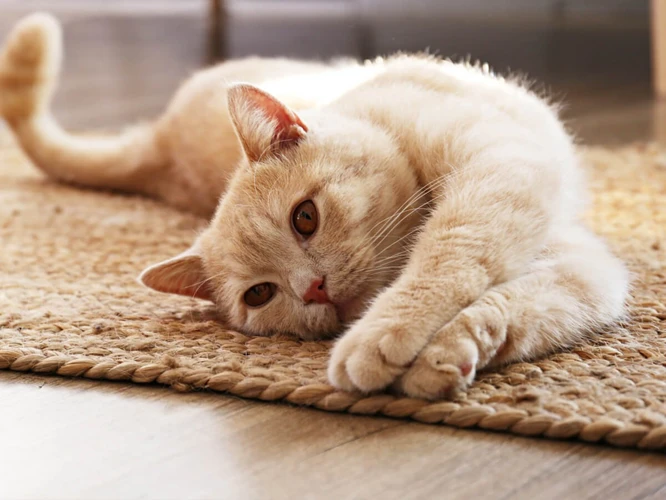
It’s no secret that American Shorthair cats can experience various health issues throughout their lives. One common problem that many Shorthair cat owners face is urinary tract problems. These issues can be incredibly frustrating for both cats and their owners, causing discomfort, pain, and even blockages. In this section, we’ll cover some of the most common urinary tract problems that American Shorthair cats experience and provide guidance on how to recognize and treat them. Keep reading to learn about the symptoms of FLUTD, crystals or stones in the urine, and more.
FLUTD
FLUTD, also known as Feline Lower Urinary Tract Disease is a very common health issue in American Shorthair cats and is characterized by a group of diseases that affect the urinary bladder and/or urethra. This condition can cause mild to severe problems for your cat, including straining while urinating, frequent urination, and blood in the urine.
Causes of FLUTD:
FLUTD can be caused by several factors such as urinary tract infections, bladder stones, urethral obstructions, bladder inflammation, and even stress. American Shorthair cats are more prone to this disease due to their body size and genetic predisposition.
Symptoms of FLUTD:
Listed below are some common symptoms of FLUTD that American Shorthair cat owners should look out for:
- Straining while urinating
- Frequent urination in small amounts
- Blood in the urine
- Urination outside the litter box
- Licking around the urinary area
Treatment of FLUTD:
If you notice any of these symptoms, you should take your cat to the vet right away. The vet may prescribe some medications such as antibiotics, anti-inflammatory drugs, or pain relievers. In severe cases, hospitalization may be necessary. In cases where stress is the likely cause of FLUTD, your vet may advise on certain stress management techniques.
Preventive Measures for FLUTD in American Shorthair cats:
While some cases of FLUTD cannot be avoided, there are a few things you can do to help prevent this condition in your American Shorthair cat:
- Provide your cat with clean water every day
- Feed them a well-balanced diet and avoid dry food
- Encourage exercise and physical activity
- Reduce stress levels by providing a calm environment
- Keep the litter box clean and accessible
FLUTD is a common health issue that affects American Shorthair cats. Early detection and treatment are key to ensuring your cat’s long-term health. And by taking preventive measures, you can significantly reduce the likelihood of your cat developing FLUTD in the first place.
Crystals or Stones in the Urine
Crystal formation and urinary stones are common health issues among American Shorthair cats. These are basically mineral buildups in the urinary tract and bladder that cause discomfort, pain, and difficulty in urination.
The most common types of crystals found in cat urine are struvite and oxalate crystals. Struvite crystals are typically formed due to a urinary tract infection, whereas oxalate crystals can be linked to dietary factors. In addition to crystals, stones can also form in the urinary tract. These stones are also commonly made up of minerals such as struvite or calcium oxalate.
Symptoms of crystals or stones in the urine can vary, but may include lethargy, vomiting, loss of appetite, and difficulty urinating. When a cat is unable to urinate, it is considered a medical emergency and requires immediate veterinary attention.
Treatment for crystals or stones in the urine typically depends on the severity of the symptoms and the underlying cause. In mild cases, increasing water intake and dietary modifications may be the only necessary treatment. In more severe cases, surgical intervention may be required.
To prevent crystals or stones from forming in the first place, it is important to encourage your American Shorthair cat to drink plenty of water. Offering wet food instead of dry can also help increase fluid intake. Additionally, feeding a high-quality diet with balanced minerals can help reduce the chances of crystal formation. However, it is still important to monitor your cat’s urinary health and ensure they are urinating regularly and without pain.
Crystals or stones in the urine can be a painful and serious health issue for American Shorthair cats. Early detection and treatment is key in preventing further complications. By promoting proper hydration and a balanced diet, you can help reduce the risk of crystal formation and overall urinary tract health in your beloved feline friend. For more information on other potential health issues for American Shorthair cats, see our article on genetic health issues in American Shorthair Cats.
Obesity
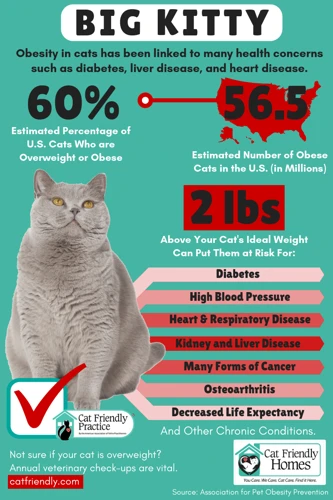
It is no secret that obesity is a major health concern not only for humans but also for our feline friends. According to the American Veterinary Medical Association, obesity is the most common nutritional disorder affecting cats in the United States. Obesity can lead to a host of other health issues, including diabetes, arthritis, and urinary tract problems. While some cats may be genetically predisposed to obesity, there are steps you can take to keep your American Shorthair cat at a healthy weight. Let’s explore the dangers of obesity and how you can help your cat live a long and healthy life. For more information regarding genetic health issues, check out our article on genetic health issues in American Shorthair cats, and for information on urinary tract issues, head over to our article on urinary tract problems.
The Dangers of Obesity
Obesity is a common problem among American Shorthair cats that can have serious health implications. It is a gradual process that can sneak up on owners, as it is often difficult to notice a small weight gain over time. It is important to recognize the dangers of obesity in American Shorthair cats.
Here are the dangers of obesity in American Shorthair cats:
- Reduced lifespan: Obese cats are more vulnerable to diseases and have a shorter lifespan than their healthy counterparts. They are at an increased risk of developing diabetes, arthritis, and heart disease, which can be life-threatening.
- Joint problems: Carrying extra weight can put extra strain on your cat’s joints, leading to arthritis and other joint problems.
- Difficulty breathing: Obesity can make it difficult for your cat to breathe properly, especially if they have an underlying respiratory condition like asthma or chronic bronchitis.
- Increased risk of cancer: Research has shown that overweight cats are more likely to develop cancer in their lifetime.
- Poor grooming habits: Obese cats may have difficulty grooming themselves, which can lead to matted hair, skin infections, and an unpleasant odor.
- Difficulty regulating body temperature: Obese cats have a harder time regulating their body temperature, which can lead to heat intolerance and overheating in warm weather.
Without proper attention, obesity in American Shorthair cats can become a serious issue. However, by addressing your cat’s diet and exercise routine, you can easily prevent obesity and its associated dangers.
To learn more about American Shorthair cat care, read about arthritis, allergies, and diabetes.
How to Keep Your Cat Fit
Keeping your American Shorthair cat fit is essential for long-term health. Here are some ways you can ensure your cat stays active and healthy:
| Method | Description |
|---|---|
| Playtime with Toys | Provide your cat with toys that encourage them to move around and play. Laser pointers, balls, and feathers on strings are all great options. This will help your cat get some exercise and stay active. |
| Interactive Feeding | Avoid leaving large amounts of food out for your cat to graze on throughout the day. Instead, use interactive feeding toys that will promote your cat’s hunting instincts. This will help your cat stay active and mentally stimulated while they eat their meals. |
| Scratching Posts | Scratching is a natural behavior for cats. Providing your cat with a designated scratching post or pad can help them stay active and healthy. It will also prevent your furniture and carpets from becoming scratched and damaged. |
| Encouraging Movement | Make sure your cat has adequate space to move around and explore. Encourage them to climb and jump by providing platforms and cat trees in your home. You can also create obstacle courses or play hide-and-seek games to keep your cat active and engaged. |
| Outdoor Time | If it is safe for your cat to go outside, allow them to spend time in a securely enclosed outdoor area. This will allow them to get fresh air, exercise, and explore, which is essential for their physical and mental health. Be sure to supervise your cat while they are outside. |
It is important to remember that cats are individuals with unique personalities and needs. You should tailor your approach to keeping your cat healthy to their specific needs and preferences. By providing your American Shorthair cat with opportunities for exercise, play, and exploration, you can help them lead a long and healthy life.
Heart Problems
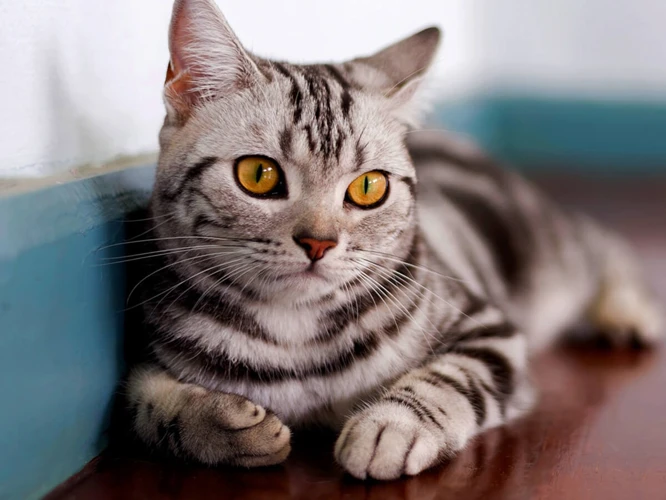
The heart is the engine that keeps our feline friends up and running, and as much as we’d like them to be immune to health issues, American Shorthair cats are prone to heart problems just like any other breed. It’s important to stay informed of the signs and symptoms of heart issues in cats, so you can catch any potential problems early and keep your furry companion healthy for years to come. In this section, we’ll delve into some of the most common heart problems that affect American Shorthair cats. Let’s learn about hypertrophic cardiomyopathy and heart murmurs.
Hypertrophic Cardiomyopathy
Hypertrophic Cardiomyopathy is a common heart problem that affects American Shorthair cats. It is a disease in which the heart muscle becomes thickened, making it harder for the heart to pump blood efficiently. This can lead to heart failure and even sudden death.
Symptoms of Hypertrophic Cardiomyopathy:
Symptoms of Hypertrophic Cardiomyopathy in cats can vary, but they may include:
- Coughing
- Difficulty breathing
- Weakness
- Fainting
- Loss of appetite
- Weight loss
- Lethargy
Treatment of Hypertrophic Cardiomyopathy:
Hypertrophic Cardiomyopathy in cats is a serious condition that requires prompt veterinary attention. Treatment options may include:
| Treatment | Description |
|---|---|
| Medication | There are several medications that can be prescribed to help manage the symptoms of Hypertrophic Cardiomyopathy. These may include diuretics, ACE inhibitors, or beta-blockers. |
| Diet changes | Changing your cat’s diet to a low-sodium or prescription cardiac diet may be recommended to help manage their condition. |
| Surgery | In severe cases, surgery may be necessary to remove part of the thickened heart muscle. |
It is important to note that there is no cure for Hypertrophic Cardiomyopathy in cats, but with proper treatment, the symptoms can be managed and your cat can live a relatively normal life.
As with any health issue, if you suspect that your American Shorthair cat may have Hypertrophic Cardiomyopathy, it is important to seek veterinary care as soon as possible. Early detection and treatment can help prevent serious complications and improve your cat’s quality of life.
Heart Murmurs
A heart murmur is a sound that is produced when there is turbulent blood flow in the heart. In American Shorthair cats, heart murmurs usually occur due to an underlying heart disease. Heart murmurs can be classified into different grades based on their loudness and timing in the heart cycle. The higher the grade, the louder the murmur. Here is a table summarizing the different grades of heart murmurs:
| Grade | Description |
|---|---|
| Grade I | Barely audible with a stethoscope |
| Grade II | Audible with a stethoscope but very soft |
| Grade III | Audible with a stethoscope and moderately loud |
| Grade IV | Loud and readily palpable with a stethoscope |
| Grade V | Very loud and heard with only a part of the stethoscope touching the chest |
| Grade VI | Extremely loud and heard even without a stethoscope |
Heart murmurs can be caused by a variety of heart conditions, such as hypertrophic cardiomyopathy, heart valve disease, or congenital heart defects. Some heart murmurs may not require any treatment, but others may indicate a serious underlying condition that requires medical attention. If your American Shorthair has been diagnosed with a heart murmur, it is important to follow your veterinarian’s advice regarding monitoring and treatment. Regular check-ups and diagnostic testing may be necessary to assess the severity of the heart murmur and to detect any changes in the heart’s function. As with most health issues, prevention and early detection are key to avoiding severe consequences.
Respiratory Issues
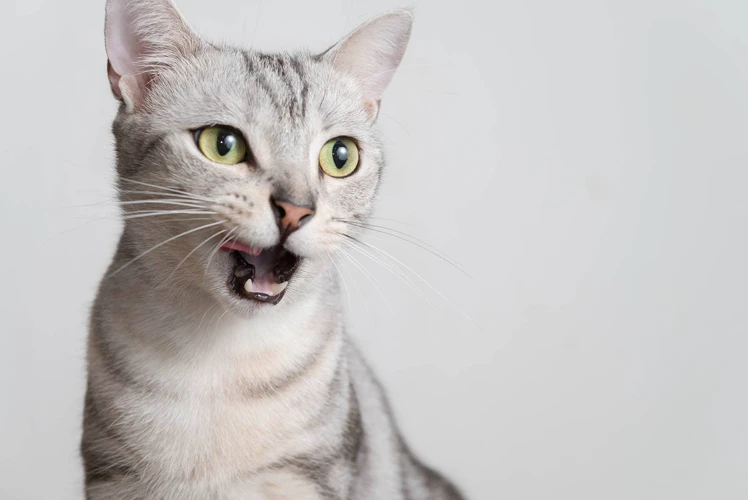
Our feline friends are susceptible to various health issues, including respiratory problems. Respiratory issues are not uncommon in American Shorthair cats, and they can take a toll on their overall health and wellbeing. From asthma to chronic bronchitis, respiratory issues can cause discomfort and breathing difficulties in cats. It is crucial for cat owners to understand the symptoms, causes, and treatment options for respiratory conditions. In this section, we will delve into some common respiratory issues that American Shorthair cats can experience and what you can do to help your furry friend stay healthy and comfortable.
Asthma
Asthma is a common respiratory problem that can affect American Shorthair cats just like humans. This condition is characterized by inflammation and narrowing of the airways, making it difficult for cats to breathe properly. If you notice your furry friend wheezing, coughing, or having difficulty breathing, it could be a sign of asthma. Here are some important things to note about cat asthma:
- Symptoms: In addition to wheezing, coughing, and shortness of breath, cats with asthma may also experience lethargy, loss of appetite, and weight loss. These symptoms can be exacerbated by environmental factors such as cigarette smoke, dust, and pollen.
- Diagnosing: If you suspect that your cat has asthma, it’s important to schedule an appointment with a veterinarian. Your vet will perform a thorough physical exam and may recommend additional tests such as X-rays or bloodwork to rule out other respiratory conditions.
- Treatment: While there is no cure for asthma, it can be managed through medication and environmental modifications. Your vet may prescribe bronchodilators or corticosteroids to help relieve your cat’s symptoms. Additionally, making changes to your cat’s environment such as using an air filter and avoiding known triggers can help prevent asthma attacks.
It’s important to note that untreated asthma can lead to serious respiratory distress and even death in severe cases. If you suspect that your cat may have asthma, it’s important to seek veterinary care as soon as possible. With proper management and care, cats with asthma can live happy and healthy lives.
Chronic Bronchitis
Chronic bronchitis is a common respiratory issue in American Shorthair cats. It’s a condition that leads to inflammation and irritation of the airways in the lungs, causing difficulty in breathing. This issue can be caused by environmental factors or even long-term exposure to smoke or other irritants.
Symptoms of Chronic Bronchitis
The symptoms of chronic bronchitis in cats include:
| Symptoms of Chronic Bronchitis |
|---|
| Coughing |
| Wheezing |
| Shortness of breath |
| Labored breathing |
| Rapid breathing |
| Low energy levels |
If your cat displays any of these symptoms, you should take them to a vet as soon as possible.
Treatment of Chronic Bronchitis
The treatment of chronic bronchitis in cats includes:
| Treatment of Chronic Bronchitis |
|---|
| Medication to reduce inflammation |
| Corticosteroids to reduce irritation |
| Oxygen therapy |
| Avoiding smoke and other irritants |
| Keeping the environment clean and dust-free |
Medication can be given orally or through inhalation, and oxygen therapy can help your cat breathe easier when they’re having difficulty breathing. Avoiding smoke and other irritants is key to preventing chronic bronchitis, and keeping the environment clean and free of dust can also help reduce the risk of your cat developing this condition.
Chronic bronchitis is a serious respiratory issue that requires medical attention. If you notice any of the symptoms in your American Shorthair cat, take them to the vet for treatment immediately. With proper care and management, chronic bronchitis can be controlled, and your cat can live a healthy and happy life.
Internal and External Parasites
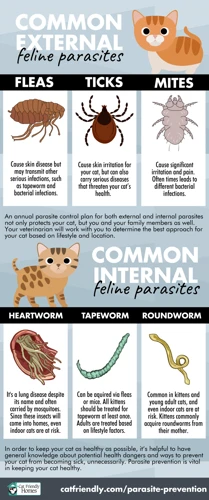
As much as we love our furry friends, they can be susceptible to various internal and external parasites. These pesky creatures can cause discomfort, illness, and even severe health issues if left untreated. It’s important to be aware of the signs and symptoms of parasitic infestations and take preventative measures to ensure the health and well-being of your American Shorthair cat. Let’s take a closer look at some of the common internal and external parasites that may affect your feline friend.
Fleas
Fleas are a common problem for American Shorthair cats, and can cause significant discomfort and health issues if left untreated. These tiny parasites feed on the blood of their hosts, and can cause itching, irritation, and even anemia in severe cases.
Causes of Fleas: Fleas are often picked up from other animals or environments, and can quickly infest a home. American Shorthair cats who spend time outdoors or come into contact with other animals are at a higher risk of getting fleas. Fleas can also be brought inside on clothing or shoes.
Symptoms of Fleas: The most common symptom of fleas is itching and scratching, especially around the neck and tail. You may also notice tiny black dots on your cat’s skin or in their fur, which are flea droppings. Severe infestations can cause hair loss, skin infections, and anemia.
Treatment: If you suspect that your American Shorthair cat has fleas, it is important to act quickly to prevent the infestation from spreading. There are many flea treatments available, including topical treatments, collars, and oral medications. Your veterinarian can recommend the best solution for your cat based on their age, weight, and overall health.
Prevention: The best way to prevent flea infestations is to keep your American Shorthair cat indoors and away from other animals that may be carrying fleas. Regular grooming and cleaning of your home can also help to prevent fleas from taking hold. Vacuuming regularly and washing bedding and upholstery can help to eliminate flea eggs and larvae before they have a chance to develop into adults.
Fleas can be a frustrating and uncomfortable problem for American Shorthair cats and their owners, but with prompt treatment and prevention measures, it is possible to keep these parasites at bay and keep your cat healthy and happy.
| Causes of Fleas | Symptoms of Fleas | Treatment | Prevention |
|---|---|---|---|
| Fleas are often picked up from other animals or environments, and can quickly infest a home. | The most common symptom of fleas is itching and scratching, especially around the neck and tail. You may also notice tiny black dots on your cat’s skin or in their fur, which are flea droppings. | There are many flea treatments available, including topical treatments, collars, and oral medications. Your veterinarian can recommend the best solution for your cat based on their age, weight, and overall health. | The best way to prevent flea infestations is to keep your American Shorthair cat indoors and away from other animals that may be carrying fleas. Regular grooming and cleaning of your home can also help to prevent fleas from taking hold. Vacuuming regularly and washing bedding and upholstery can help to eliminate flea eggs and larvae before they have a chance to develop into adults. |
Intestinal Worms
Intestinal worms are a common health issue in American Shorthair Cats. These parasitic worms can cause a range of symptoms, including weight loss, vomiting, diarrhea, and anemia. The following are some of the most common types of intestinal worms that can affect cats:
- Roundworms: Roundworms are long, thin worms that can grow up to several inches in length. They live in the cat’s intestines and can cause vomiting, diarrhea, and a pot-bellied appearance in affected cats. Roundworms can also be transmitted to humans, especially children, through contact with contaminated soil or cat feces.
- Hookworms: Hookworms are small worms that live in the cat’s intestines and feed on blood. They can cause diarrhea, bloody stools, weight loss, and anemia. Hookworms can also be transmitted to humans through contact with contaminated soil or cat feces.
- Tapeworms: Tapeworms are long, flat worms that live in the cat’s intestine. They can cause weight loss, vomiting, and diarrhea. Tapeworms are typically transmitted to cats through the ingestion of fleas, which can carry the tapeworm larvae.
- Whipworms: Whipworms are small, thread-like worms that live in the cat’s large intestine. They can cause diarrhea, weight loss, and anemia. Whipworms are less common in cats than other types of intestinal worms.
Intestinal worms can be diagnosed through a fecal exam, which involves analyzing a sample of the cat’s feces for the presence of worm eggs or larvae. Treatment typically involves the use of deworming medication, which can kill the worms and help to alleviate symptoms. In addition to medical treatment, it’s important to regularly clean and disinfect your cat’s litter box to prevent the spread of intestinal worms. You should also practice good hygiene when handling your cat and be sure to wash your hands thoroughly after cleaning the litter box or coming into contact with your cat’s feces.
Ear Mites
Ear mites are a common issue in American Shorthair Cats, particularly in young cats and kittens. These tiny parasites live on the surface of the skin inside a cat’s ear canal, feeding on wax and oils. Ear mites can cause intense itching and irritation for your cat, leading to scratching and discomfort.
How to Recognize Ear Mites
Ear mites are difficult to see with the naked eye, but their symptoms are usually easy to spot. Watch for the following signs that your cat may have ear mites:
| Dark, crumbly debris in the ear canal | Strong, unpleasant odor from the ears | Intense itching and scratching at the ears |
| Head shaking and ear flapping | Crusty or scabby lesions around the ears | Redness and swelling in and around the ears |
Treatment for Ear Mites
If your cat is showing signs of ear mites, it’s important to seek treatment from your veterinarian. Your veterinarian can often diagnose ear mites simply by examining your cat’s ears under a microscope. Once your cat is diagnosed with ear mites, your veterinarian will likely recommend a course of treatment that may include medicated ear drops, topical medications, or oral medications. It’s important to follow your veterinarian’s instructions carefully and complete the entire course of treatment to ensure that the ear mites are fully eradicated.
Prevention of Ear Mites
Preventing ear mites in your American Shorthair Cat is relatively easy. Regular cleaning of your cat’s ears and inspection of them for any signs of ear mites can help catch the problem early, reducing the chances of further complications. Your veterinarian can recommend an ear cleaning routine that is safe and effective for your cat. Additionally, if you have multiple pets in your home, isolate any pet with symptoms of ear mites until treatment has been completed to prevent the spread of the parasites.
Cancer

As much as we wish it weren’t true, cancer is not just a human issue – cats can also be affected by this devastating disease. Unfortunately, American Shorthair cats are no exception. It’s essential to understand the various types of cancer that can affect these feline friends to provide the best care and treatment options possible. In this section, we’ll explore lymphoma and squamous cell carcinoma, two common forms of cancer in American Shorthair cats, their symptoms, and treatment options. While it’s scary to think about, it’s always better to be informed and prepared, especially when it comes to the health of a beloved pet.
Lymphoma
Lymphoma is a type of cancer that affects a cat’s lymphatic system, which plays a vital role in maintaining a healthy immune system. It is one of the most common types of cancer in cats, and unfortunately, American Shorthair cats are no exception. Lymphoma can affect any part of the body, including the lymph nodes, internal organs, and even the skin. Some common symptoms of lymphoma in cats include lethargy, loss of appetite, weight loss, vomiting, and diarrhea.
Types of Lymphoma in Cats: There are several types of lymphoma that can affect cats, including alimentary lymphoma, mediastinal lymphoma, multicentric lymphoma, and extranodal lymphoma.
- Alimentary lymphoma: affects the digestive system and can cause diarrhea, vomiting, and weight loss.
- Mediastinal lymphoma: affects the chest cavity and can cause breathing difficulties.
- Multicentric lymphoma: affects the lymph nodes and can cause enlargement of various lymph nodes throughout the body.
- Extranodal lymphoma: can affect any part of the body outside the lymph nodes, including the skin, eyes, and organs.
Treatment for Lymphoma: The treatment options for lymphoma in cats may vary depending on the location and severity of the cancer. Some common treatment options include chemotherapy, radiation therapy, or a combination of both. Surgery may also be an option in some cases. The goal of treatment is to eliminate cancer cells, reduce symptoms, and improve the cat’s quality of life. It’s essential to consult a veterinarian if you notice any unusual changes in your cat’s behavior or health.
Prevention of Lymphoma: Unfortunately, there’s no surefire way to prevent lymphoma in cats. However, there are some measures you can take to reduce the risk of your cat developing cancer. Providing a healthy diet, regular exercise, and avoiding exposure to environmental toxins can all help reduce the risk of cancer. Additionally, regular vet checkups can help detect early signs of cancer and ensure prompt treatment.
Squamous Cell Carcinoma
Squamous Cell Carcinoma, or SCC, is a serious health issue that can affect American Shorthair cats. This type of cancer originates in the squamous cells, which are flat and scale-like cells that are found on the surface of the skin, in the lining of the mouth, and in other tissues throughout the body.
Symptoms of Squamous Cell Carcinoma
The symptoms of SCC depend on the location of the tumor. In cats, it is most commonly found on the nose or ears. Some of the signs to look out for include:
- A small raised bump
- An area of thickened, scaly skin
- A sore that doesn’t heal
- A crusty or bleeding lesion
- Difficulty eating or chewing (if the tumor is in the mouth)
If you notice any of these symptoms, it is important to take your cat to the vet as soon as possible.
Treatment of Squamous Cell Carcinoma
The treatment of SCC depends on the size and location of the tumor, as well as the overall health of the cat. Treatment may include surgery to remove the tumor, radiation therapy, or chemotherapy.
In some cases, the tumor may be too large or inoperable, and the best course of action may be to manage the symptoms through pain management and other palliative care measures.
Prevention of Squamous Cell Carcinoma
While there is no guaranteed way to prevent SCC, there are some things you can do to reduce your cat’s risk. These include:
| 1. | Keeping your cat indoors as much as possible, especially during peak sunlight hours (10am-4pm) |
| 2. | Applying sunscreen to your cat’s nose and ears when they do go outside |
| 3. | Regularly inspecting your cat’s skin for any signs of bumps or lesions and taking them to the vet if you notice anything unusual |
By taking these preventive measures and keeping a close eye on your cat’s health, you can help reduce their risk of developing this serious health condition.
Hyperthyroidism

It’s not uncommon for American Shorthair cats to experience health issues as they age. One such condition that owners should be aware of is hyperthyroidism. This condition occurs when the thyroid gland produces an excess of hormones, which can lead to a range of symptoms and complications. In this section, we’ll explore the symptoms, treatment options, and preventive measures for hyperthyroidism in American Shorthair cats.
Symptoms of Hyperthyroidism
Hyperthyroidism is a common health issue in American Shorthair cats, and it occurs when the thyroid gland produces an excessive amount of thyroid hormone. This can lead to a range of symptoms, which are important for every cat parent to be aware of. Some of the symptoms of hyperthyroidism in American Shorthair cats include:
- Weight loss: Despite having a good appetite, cats with hyperthyroidism may lose significant amounts of weight.
- Increased appetite: Cats with hyperthyroidism may show an insatiable appetite, but continue to lose weight due to their increased metabolism.
- Hyperactivity: Your cat may become restless and suffer from sleep disturbances, leading to an overall hyperactive behavior.
- Vomiting: Feline hyperthyroidism can trigger vomiting and cause your cat to feel nauseous.
- Diarrhea: Digestive problems such as diarrhea can also occur as a result of this condition.
- Increased thirst: Your cat may show signs of dehydration and grossly consume more water, while still appearing to be thirsty.
- Increased urination: Increased thyroid function and thirst inevitably increase urination frequency and amount.
- Heart problems: In severe cases, hyperthyroidism may cause complications such as heart murmurs, an increased heart rate, or an enlarged heart.
- Hypertension: Increased blood pressure can be seen in American Shorthair cats with hyperthyroidism..
If you notice any of these symptoms in your American Shorthair cat, it’s essential to seek veterinary treatment promptly. Early diagnosis and proper treatment are vital in managing and preventing complications that might arise from hyperthyroidism.
Treatment of Hyperthyroidism
Hyperthyroidism is a condition caused by an overactive thyroid gland that produces an excessive amount of thyroid hormones, leading to a variety of health problems in American Shorthair cats. Luckily, there are several treatments available to alleviate the symptoms of this condition and improve your cat’s quality of life.
One of the most common treatment options for hyperthyroidism in cats is medication. Anti-thyroid drugs such as methimazole can be prescribed to inhibit the production of thyroid hormones. These drugs can have side effects, so it’s important to monitor your cat’s behavior and health while on medication. Blood tests may be required periodically to ensure that the medication is working correctly and to adjust the dosage if necessary.
Another option is radioiodine therapy, which involves administering a small amount of radioactive iodine to your cat. The radioactive iodine is absorbed by the thyroid gland and destroys the overactive cells, resulting in a lower production of thyroid hormones. This treatment is considered very safe, but it does require hospitalization for a few days to monitor your cat’s radiation levels.
Surgery is also a possibility for treating hyperthyroidism. A thyroidectomy involves removing the affected thyroid gland altogether, which eliminates the production of thyroid hormones. This is a complex surgical procedure and requires general anesthesia, so there are risks involved. However, if successful, it can provide a permanent solution for your cat’s hyperthyroidism.
It’s important to discuss these treatment options with your veterinarian to determine which one is best for your cat’s individual needs. It’s also important to note that hyperthyroidism can lead to other health complications, so ongoing monitoring and treatment may be necessary.
Here is a table summarizing the different treatment options for hyperthyroidism in American Shorthair Cats:
| Treatment Option | Description | Potential Side Effects |
|---|---|---|
| Medication | Inhibits production of thyroid hormones | Loss of appetite, vomiting, lethargy |
| Radioiodine Therapy | Destroys overactive thyroid cells | None, but requires hospitalization for a few days |
| Surgery | Removal of affected thyroid gland | Risks associated with general anesthesia |
Diabetes

Diabetes is a serious health concern that affects many American Shorthair cats. It occurs when the body is unable to regulate blood sugar levels properly, leading to high levels of glucose in the blood. This can lead to a variety of health problems and complications if left untreated. In this section, we will discuss the symptoms and treatment of diabetes in American Shorthair cats, as well as ways to prevent this condition from developing. So, let’s dive in and learn more about this common health issue.
Symptoms of Diabetes
Diabetes is a health issue that can affect American Shorthair cats just like humans. Early detection is key to managing this condition, and one way to do this is by recognizing the symptoms of diabetes. If you notice any of the following symptoms in your cat, it’s important to consult your veterinarian:
- Increased Thirst: Cats with diabetes tend to drink more water than usual. You may notice that your cat’s water bowl needs to be refilled more frequently.
- Increased Urination: As a result of drinking more water, diabetic cats also tend to urinate more frequently. You may need to change your cat’s litter box more often.
- Weight Loss: Despite eating normally or even more than before, diabetic cats may experience significant weight loss. This is because their body can’t absorb or process food properly.
- Lethargy: Diabetic cats may seem less active or sleepier than usual. This is because their body is not able to produce enough insulin to properly regulate their energy levels.
- Poor Coat Condition: Some diabetic cats may develop a dry, dull or thinning coat, which is a result of poor nutrition and a weakened immune system.
- Vomiting: In advanced cases of diabetes, cats may vomit due to excessive blood sugar levels causing damage to their organs.
It’s important to remember that these symptoms can also be indicative of other health issues, besides diabetes. However, if you notice your American shorthair cat displaying any of these symptoms, it’s best to speak to your vet as soon as possible. Early diagnosis and management of diabetes can help your furry friend live a long and healthy life.
Treatment of Diabetes
Treating diabetes in American Shorthair cats usually involves a combination of dietary changes, medication, and regular vet check-ups. The main goal of treatment is to bring the cat’s blood sugar level within normal range and prevent complications associated with diabetes.
Dietary changes: A high-protein, low-carbohydrate diet is typically recommended for diabetic cats. This helps to regulate blood sugar levels and control weight. Dry food should be avoided as much as possible, as it tends to be high in carbohydrates. It is best to feed small, frequent meals rather than one or two large meals per day.
Medication: Insulin injections are the most common medication used to treat diabetes in cats. The frequency and amount of insulin required can vary greatly from cat to cat and will need to be determined by a veterinarian. Regular blood glucose monitoring is essential to determine the correct insulin dosage.
Regular vet check-ups: Diabetic cats require regular check-ups to monitor their blood glucose levels and overall health. It is important to catch any changes in glucose levels early to prevent complications. The veterinarian may also recommend additional testing, such as blood and urine tests, to check for any other health issues.
In addition to these treatments, it is also important to monitor your cat’s water intake, as diabetic cats tend to drink more water and urinate more frequently. It is also important to keep your diabetic cat at a healthy weight and engage them in regular exercise to help regulate their blood sugar levels.
Treating diabetes in American Shorthair cats can be complex and require dedication from both the owner and veterinarian. However, with proper treatment and monitoring, many diabetic cats can live long, healthy lives.
Preventive Measures
One of the most important aspects of taking care of your American Shorthair cat’s health is preventing health issues before they arise. By being proactive and implementing a few simple preventive measures, you can help ensure your cat’s well-being for years to come. In this section, we’ll cover some key ways to keep your cat healthy, including regular vet visits, diet and exercise, and home grooming tips. Let’s get started!
Regular Vet Visits
Regular vet visits are crucial for keeping your American Shorthair cat healthy. Preventive care is the key to identifying and treating any potential health issues before they become severe. Here are some reasons why regular vet visits are essential:
- Annual check-ups: Regular check-ups allow the vet to monitor your cat’s overall health and catch any potential illnesses early on.
- Vaccinations: Vaccinations protect your cat from deadly diseases such as rabies, feline leukemia, and distemper.
- Parasite prevention: A vet can prescribe medication for fleas, ticks, heartworms, and other parasites that can cause serious health issues for your cat.
- Weight management: A vet can help you maintain your cat’s weight and avoid obesity, which can lead to a variety of health problems.
- Dental care: Your cat’s teeth need regular cleaning and care to prevent dental issues. Vets can perform teeth cleaning and check for any signs of gum disease or tooth decay.
- Senior cat care: As your cat ages, they may require more specialized care. Regular vet visits for senior cats can ensure they are receiving proper care and treatment for any age-related health concerns.
By keeping up with regular vet visits, you can help ensure your American Shorthair cat has a long and healthy life. Don’t wait until your cat is showing symptoms of a health issue, make an appointment with your vet today.
Diet and Exercise
To keep your American Shorthair cat healthy, one of the most important preventive measures is a healthy diet and regular exercise regimen. As with any animal, diet plays a huge role in maintaining good health.
Feeding a balanced diet: American Shorthair cats require a high-quality, balanced diet that includes plenty of protein and few fillers. Good-quality cat food should always be the basis of your cat’s diet. Always check the labels and choose food that is high in protein, low in carbohydrates, and contains all the necessary nutrients, vitamins, and minerals.
Avoid overfeeding: Just like humans, cats can become overweight if they eat too much. Obesity can lead to a number of health problems, including diabetes and arthritis. To prevent this, feed your cat the recommended serving size of food, and avoid constantly giving in to your cat’s demands for treats or extra servings.
Get your cat moving: Exercise is also essential for maintaining your American Shorthair’s health. If your cat is an indoor cat, make sure they have plenty of toys to play with, and create spaces for them to climb and explore. Regular playtime with your cat is a great way to help them get the physical activity they need.
Consider outdoor time: If possible, giving your American Shorthair cat outdoor time can provide them with the exercise they need. However, make sure your yard and surrounding area are safe and free from dangerous situations, such as busy roads or contaminated water sources.
Incorporating these simple measures into your American Shorthair cat’s lifestyle will help ensure they maintain their health and lead a happy, active life.
Home Grooming Tips
Grooming your American Shorthair cat is an essential part of keeping them healthy and happy. Here are some tips to help you with home grooming:
- Brushing: Regular brushing helps remove dead hair and debris from your cat’s coat, prevents matting, and reduces the occurrence of hairballs. Use a slicker brush or a comb with wide teeth to gently brush your cat’s fur. Be sure to brush against the direction of hair growth for best results.
- Eye Care: As with any breed, American Shorthairs can develop eye infections or discharge. To prevent or catch this early, wipe your cat’s eyes with a warm and damp cloth or a pet-safe eye wipe. If you notice any unusual changes, make sure to bring your cat to the vet.
- Nail Trimming: Trimming your cat’s nails will not only keep them from scratching furniture and people, but will also prevent the nails from growing too long and causing pain. Use a special cat nail clipper, and never trim too close to the quick (pink part of the nail). If you’re not comfortable doing this yourself, ask your vet or a professional groomer to help you out.
- Oral Hygiene: Dental issues are common in American Shorthair cats, so it’s important to keep their teeth and gums healthy. Brush your cat’s teeth with a pet-safe toothbrush and toothpaste at least twice a week. You can also offer dental chews or toys to help with dental care.
- Bathing: American Shorthairs are generally clean cats and do not require frequent baths. However, if your cat gets into something dirty or smelly, a bath may be necessary. Use a pet-safe shampoo and lukewarm water, and make sure to rinse them thoroughly. Avoid getting water in their ears.
- Ear Cleaning: Your cat’s ears should be checked regularly for any signs of discharge, redness, or odor. To clean your cat’s ears, use a gentle ear cleaner and a cotton ball or soft cloth. Do not insert anything into the ear canal.
By following these home grooming tips, you can help keep your American Shorthair cat healthy and happy. However, it’s important to also schedule regular visits with the veterinarian for professional grooming and to catch any potential health issues early.
Conclusion
After going through the various health issues that American Shorthair cats are prone to, it is important to emphasize the significance of preventive measures. By taking appropriate care of your feline friend, you can lower the possibility of many common health problems.
Regular vet visits are vital for the overall health of your American Shorthair cat. Not only do routine check-ups help detect any issues in their early stages, but they also allow for prompt treatment. Taking your cat to the vet at least once a year is recommended, but for senior cats, twice-yearly visits are advisable.
Diet and exercise play a significant role in preventing obesity and diabetes in your feline. Feeding your cat a balanced diet with high-quality nutrients helps keep them healthy and happy. Also, ensure your cat gets regular exercise with toys and playtime that encourages movement.
Home grooming tips are important for maintaining the overall health of your furry friend. Regular grooming can help detect and prevent flea or tick infestations, and also help identify any lumps, bumps, or early signs of skin irritations. Use a soft brush made for cats to remove dead hair and prevent hairballs, and always check their ears and teeth for any signs of infections.
In conclusion, by adopting healthy preventive measures and taking appropriate care of your American Shorthair cat, you can significantly reduce the risk of common health-related issues. With the right diet, exercise routine, and regular vet visits, you can keep your feline friend healthy, happy, and thriving for years to come.
Frequently Asked Questions
What is the most common dental issue in American Shorthair cats?
The most common dental issue in American Shorthair cats is gingivitis.
What are the symptoms of FLUTD?
The symptoms of FLUTD include frequent urination, straining to urinate, bloody urine, and crying out in pain while urinating.
How can I prevent obesity in my American Shorthair cat?
You can prevent obesity in your American Shorthair cat by feeding them a balanced diet, providing regular exercise opportunities, and avoiding overfeeding or giving too many treats.
What is hypertrophic cardiomyopathy?
Hypertrophic cardiomyopathy is a heart condition in which the walls of the heart become abnormally thick, which can lead to difficulty in pumping blood throughout the body.
How is asthma in cats diagnosed?
Asthma in cats is typically diagnosed through X-rays, blood work, and a physical exam by a veterinarian.
What is the most common type of cancer in cats?
The most common type of cancer in cats is lymphoma.
What are the symptoms of hyperthyroidism?
The symptoms of hyperthyroidism include weight loss, excessive hunger and thirst, vomiting, and diarrhea.
What can be done to prevent diabetes in cats?
You can prevent diabetes in your cat by feeding them a balanced diet, providing regular exercise opportunities, and avoiding overfeeding or giving too many treats.
How often should I take my American Shorthair cat to the vet for checkups?
You should take your American Shorthair cat to the vet for checkups at least once a year, or more frequently if they have any health concerns.
What are some at-home grooming tips for my American Shorthair cat?
Some at-home grooming tips for your American Shorthair cat include brushing their coat regularly, trimming their nails, and cleaning their ears with a vet-approved solution.

